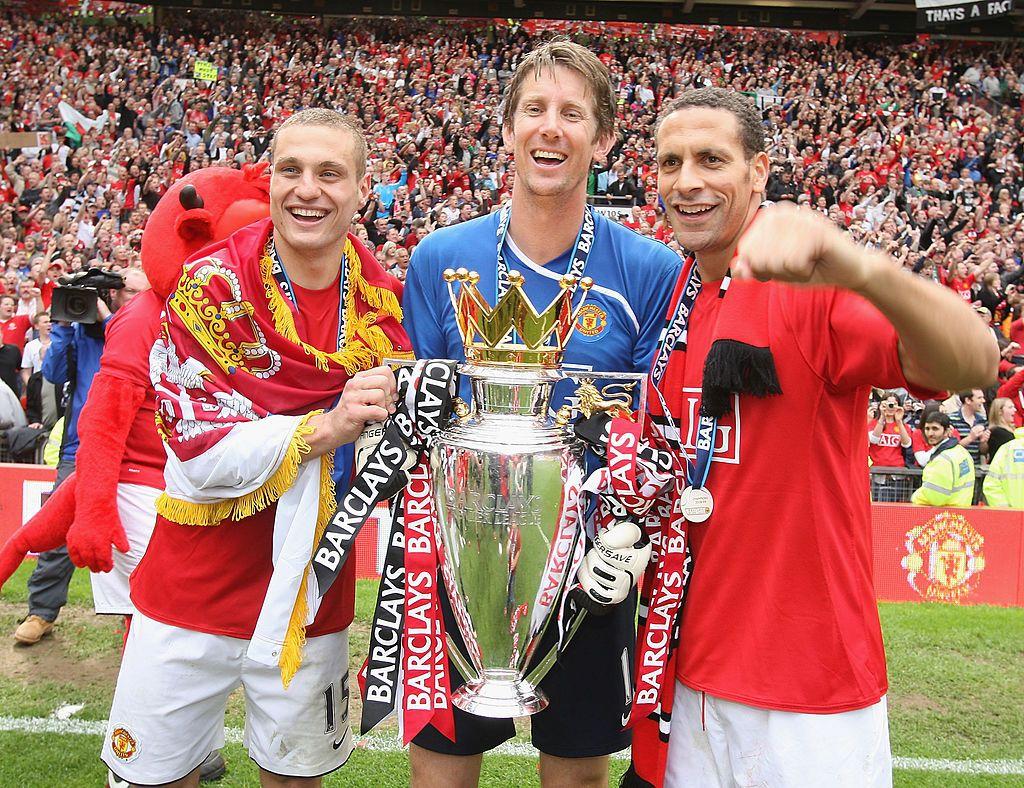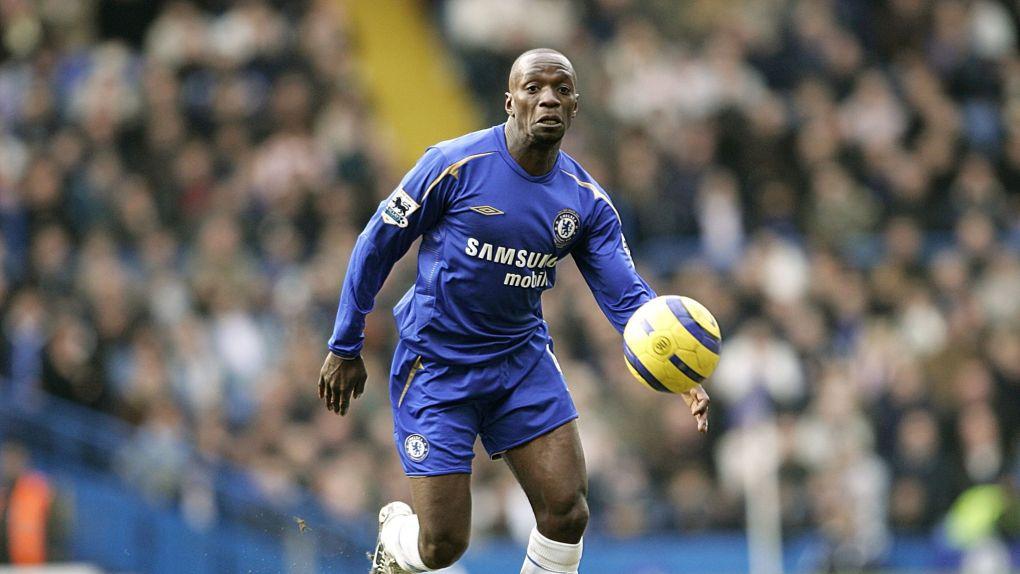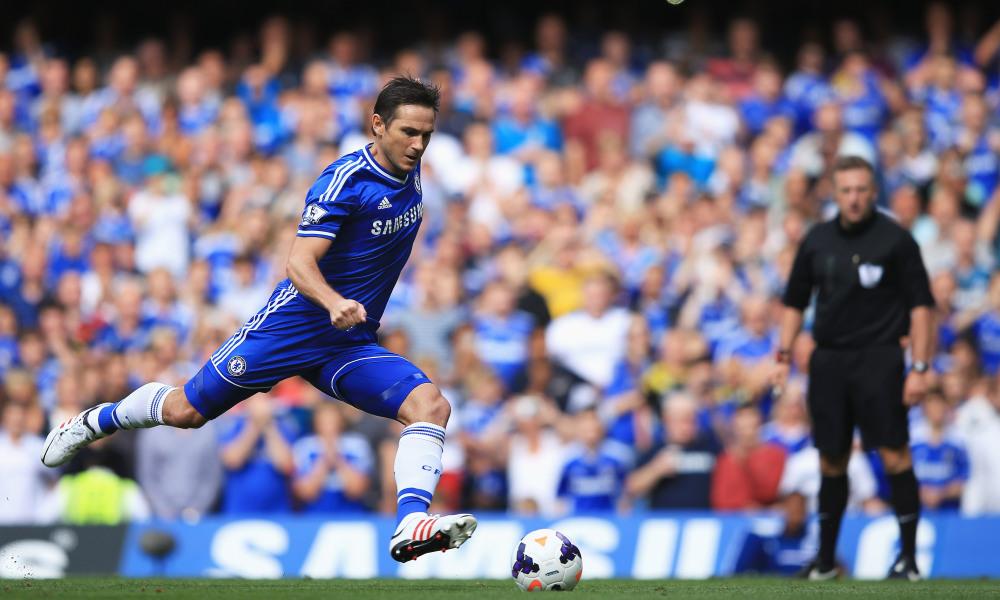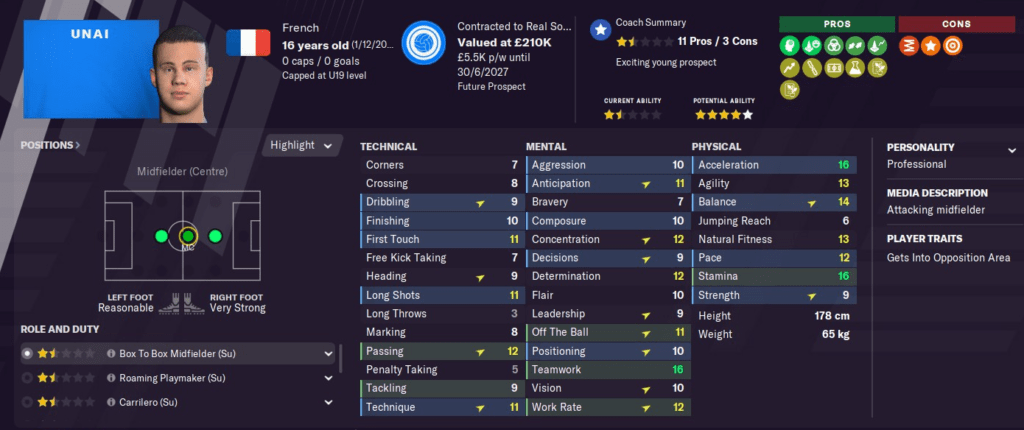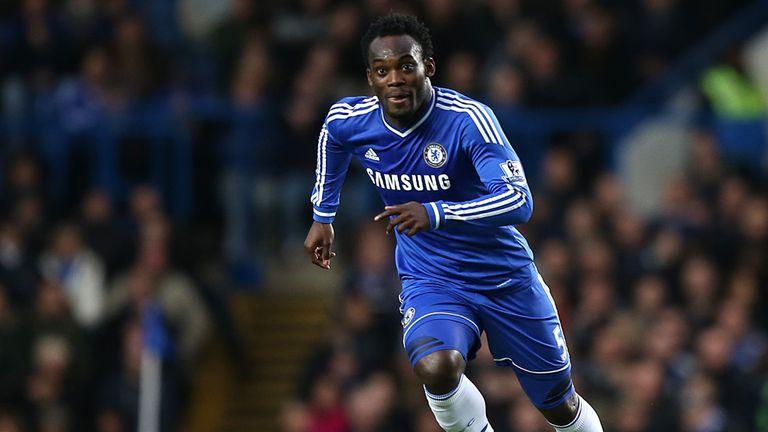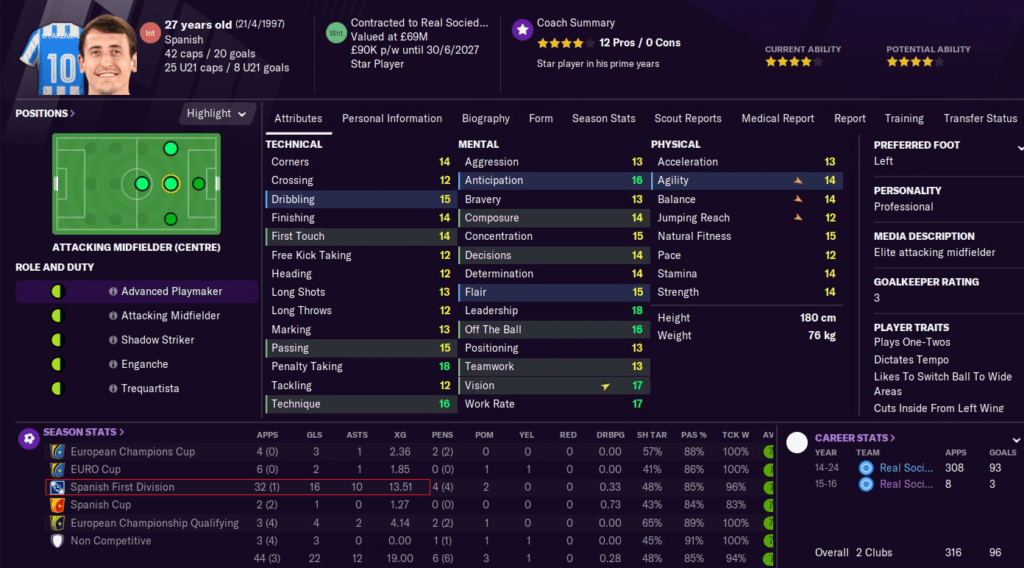
Total Football Journeyman: Building Effective Partnerships in FM21
The theme of this article is the concept of on-the-field partnerships. And how such relationships between players have proved to be so important for some of the most successful teams in the history of the game. Today, nobody can think of Barcelona from mid-2000s without remembering the names of Busquets, Iniesta and Xavi. Or Chelsea team from that same period. Alongside Man United, it was easily the most dominant team in Premier League and Europe at the time. And the names of its legendary trio: Frank Lampard, Claude Makelele and Michael Essien became synonymous with that team. The effect that chemistry between players can have on club’s success is undeniable. So how can we integrate this into the main principle of my tactic; Total Football = total balance in both defence and attack. Let’s start our examination with the very base of the formation, its centreback partnership.
Stop and Run For Cover – Ideal Defensive Duo
In writing this, my inspiration came from that Manchester United team from 2006-2009. And especially their dynamic defensive duo of Nemanja Vidic and Rio Ferdinand. The Red Devils’ ever-present centreback pair. Together Vidic and Ferdinand terrorized Premiere League forwards for a decade. It began when the Serb arrived at Old Trafford in 2006. That was the first season him and Ferdinand would play together. By many considered to be the greatest defensive partnership in Premier League history. Their best season came in 2007-2008 when they had 41 starts together across all competitions. Statistically, the pair helped Man United retain the title while only conceding 22 goals with +58 goal difference.
Vidic and Ferdinand always lined up in the classic Cover-Stopper defensive partnership. It is an old defending concept that dates back to the days before offside trap was the often-used tool that it is now. Hence when implementing these two defender duties one really should not use the offside trap instruction. The two are incompatible. That is because as your Stopper goes forward from your back line, he will invariably leave gaps behind him. So using offside trap with a staggered defensive line simply does not make sense. Instead one uses offside trap when there are two or more centrebacks with Defend duty.
As an alternative to the high defensive line+offiside trap system, the Cover-Stopper partnerships offers other distinct advantages. It really shines when you have two defenders with an exceptionally varied skill set. In such way that they can compliment each other in the best of ways.
Vidic was your typical “tough as nails” classic centreback. For many Manchester United fans he brought back memories of the club legend Steve Bruce. In partnership with Ferdinand, Nemanja complimented Rio’s more mobile and technical skills with his “no-nonsense” defending. Unlike Ferdinand, Vidic focused primarily on the defensive aspect of the game, rather than attempting to carry the ball forward or play out from the back. Both teammates and pundits praised Vidic for his aggressive defensive style and bravery. Undeniably at his prime he was one of the world’s best centrebacks due to his consistency and defensive awareness. Not to mention his strength, leadership, and ability in the air.
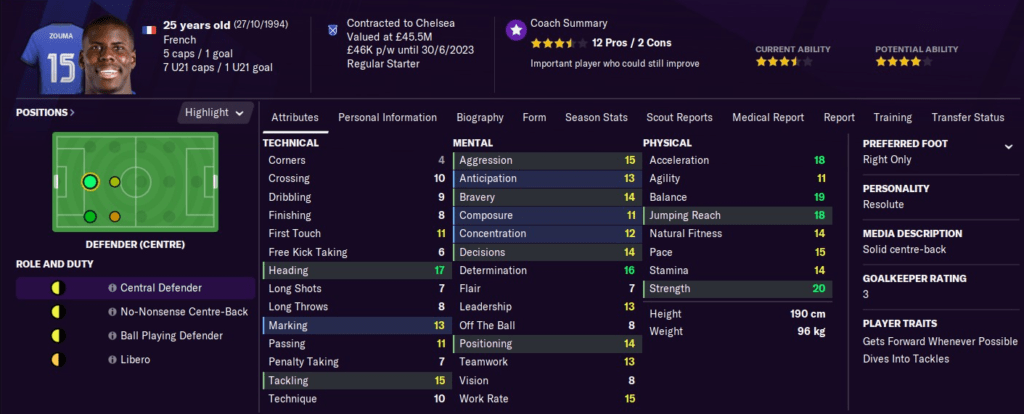
So for a Stopper in the mould of Vidic, you want a strong, tall and brave defender with great jumping, heading, tackling, marking and positioning. It is good position to play your older veteran defender with less acceleration and pace. If he is a bit slow, it’s okay as he will make up for it by his greater mental ability and higher positioning on the field. Think of your Stopper as the first barrier that the opposition forward has to cross. And most of the time the opponent won’t be able to get past him. And If he does then of course it is time for the covering centreback’s to shine.
While Vidic was the stereotypical Stopper, Rio Ferdinand was seen as rather atypical defenceman due to his more elegant, graceful, and “continental” (rather than “English” physical) style of defensive play. Ferdinand was singled out for his unique technical ability, skill, balance, and confidence on the ball. Known for his composure in possession, distribution with either foot, as well as the ability to bring the ball forward into the midfield. Much like Ferdinand at his prime, an ideal Cover Duty Defender should have great pace, anticipation and positioning. It is not required but he could also be more technical with high attributes in dribbling, first touch, passing and technique. In that case setting his role to that of Ballplaying Defender (Cover) might not be a bad idea.
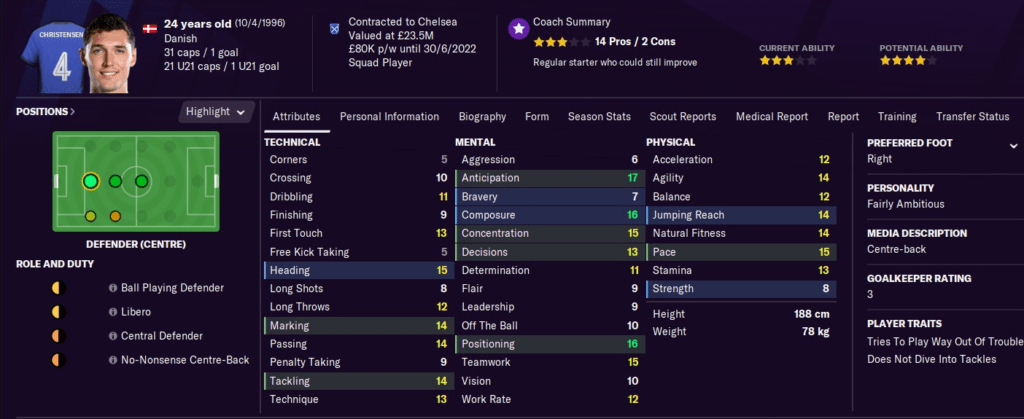
Heart, Lungs and Brain – Perfect Midfield Trio
The midfield trio is a very important part in this system. Similarly to the defensive duo of Stopper and Cover, it remains largely unchanged no matter what formation switch I make from the original 4-5-1. For my role inspiration I went no farther than the bitter rivals of Manchester United for most of its Golden Era during the early 2000s. That team was Chelsea and its midfield trio of Frank Lampard, Claude Makélélé and Michael Essien. And it has rightfully been considered one of all-time’s greatest midfield partnerships in the beautiful game.
My focus on the importance of on-the-field partnerships continues. This time with a look at the midfield three roles and their interactions. In all of the various variations that you can create from the original 4-5-1 (even the 4-3-1-2) the three midfielders play a very important role of basically being the Heart, Lungs and the Brain of the system. Here complementary roles are essential in order to bring balance to the whole formation. And none more essential that the more defensive one, the “Makélélé” role.
At his prime Makélélé was described by many pundits as one of the most talented players in his position. Makélélé revolutionised the role of the defensive midfielder in the Premier League. As an extremely hard-working Defensive Midfielder, he was also capable of playing in more advanced positions. Although he usually played in front of his Chelsea’s back-line. There he served as a defensive foil for the more offensive midfielders. He was helped in this by his aggressive tackling, uncanny ability to read the game, break down plays, mark and anticipate opponents. And most of all, perfect timing in his challenges.
To help with his ball-winning abilities Makélélé used his acceleration, positioning, concentration, decision-making and determination. Although he was not the fastest, most talented or technically skilled player on the pitch. Nor particularly good in the air. He was technical enough to use his short and simple passing game to good effect and greater benefit of the team. It allowed him to quickly give the ball to where it could do most damage at the feet of the more creative midfielders and attackers. Thus he would efficiently link up the defence with attack, after winning back possession. He possessed immense physical strength despite his small stature. Combined with his low centre of gravity, it allowed him excellent control on the ball. Which in turn helped Claude to retain possession against even the most physical and determined opponents.
In short, Makélélé was a pure example of a completely tenacious and determined player. A complete team-player in all senses of the word. Singlehandedly, he defined the role of the Anchorman. A holding midfield “destroyer” – a player that mostly focused on winning back possession and distributing the ball to other more creative players. And so how can we represent him in the game?
As you can see the young Brazilian (joining my team this summer) may not be the next Makélélé, or even present-day Kante, but still has a lot of room to develop. And he already possess more than enough numbers in all the relevant attributes for the midfield “destroyer” role.
In my overall role selection, I opted for keeping it simple rather than using a bunch of exotic roles. Instead, I prefer the players that I choose for each role to really make it their own with their unique blend of attributes and traits. Thus I play my more defensively responsible, physically strong and still technical player as my CM(D) “Makélélé” role. Then the more attacking, creative outlet, the Lampard role, as CM(A) with some added personal instructions (PIs).

The PIs here are really meant to add another dimension to the simple CM(A) role. My intention was to try to make it play closer to how real Lampard played. That is as a blend of deep attacker/playmaker, or a sort of deep shadow striker if you will. There are some exotic roles that can probably offer similar style of play (mezzala for one) but I really wanted to show you that the game gives us all the tools to create a perfect midfield with just generic roles. And the three different duties for the Central Midfielder should theoretically cover everything that you want you midfield to perform. So what is the point of complicating things with exotic roles with numerous hard-coded instructions?
Now what can I say about Frank Lampard that has not already been said or written? He is a player that probably does not need any introduction. Much like Makélélé’s name is synonymous with a dogged midfield “destroyer”, Lampard will forever the ultimate midfield “runner”.
A prolific goal-scorer throughout his career, despite his deep playing position, Lampard possessed a keen eye for goal. Always a thorn in the side of opposition defences, he possessed a talent to make late attacking runs into the penalty area. Or to produce accurate and powerful shots from distance. He also had the creativity, technique, vision and passing range of a refined playmaker. These allowed him to be deployed as a deep-lying playmaker capable of starting attacks with his passing. But Lampard was not only capable of scoring goals, providing assists and playmaking. He also did not neglect his defensive duties. As a versatile box-to-box player, Lampard could play anywhere in midfield and in any role. Throughout his career he was deployed as a central midfielder, an attacking midfielder and defensive midfielder. And even as a supporting striker.
Frank Lampard was a truly unique, hard-working player, with bags of stamina and an innate ability to read the game. Since the end of his career both managers, teammates and opponents lauded him as one of the greatest offensive midfielders of his generation. So it is rather hard to find such a player from the start of your campaign in FM21. But once the newgens start appearing, anything becomes possible. Here is my current choice for “Lampard” role.

The Belgian woderkid is only with us briefly for another season (I am not prepared to pay the 80+ million euro price tag even though we probably have enough to afford him). But I am not worried because we have his replacement (and our second “generational” player) training at the academy already. Meet Unai, my future Basque “Lampard”.
And now the third piece of the puzzle. My “Essien” role plays an important job balancing both attack and defence, without necessarily excelling at either. A concept that is perfectly matched in CM(S) role in the game.
Micheal Essien was another physically strong yet technical midfielder. He was similar to Lampard in how he personified the “box-to-box” midfielder role. Very energetic in both support and offensive play, Essien was primarily known for his disciplined, hard-tackling defensive style. Which earned him the nickname “Bison”. The Bison was definitely not as productive as Lampard in his offensive output. More of the jack-of-all trades than either Lampard or Makélélé. Nevertheless, he still possessed good technique, vision and tactical intelligence to act as an effective link between Makélélé and Lampard.
My #1 choice for Essien role. I play him as CM(S) with no added personal instructions. While your CM(A) should essentially be the Roaming Playmaker/Shadow Striker type, then in the CM(S) slot you could play your secondary playmaker. But a player with more skill in defensive arts or with exceptional work-rate and teamwork. Or your aging star midfielder that may not be as clinical going forward anymore.
So there you go, the core 5 roles in my 4-5-1 system. They never really change no matter what I do with the wide players and the striker. Even if I suddenly decide to switch the whole thing midgame from 4-5-1 to 4-3-1-2 or to 4-3-3 (it usually does not take more than 2 quick position shifts).
And that is it for now. This informal guide will continue in a future look at how the attacking trident functions in 4-5-1 and 4-3-3 formation. So stay tuned for that! If you enjoyed this article, then please follow us @ Dictate The Game’s Facebook and Dictate The Game’s Twitter.
Few other interesting articles:

